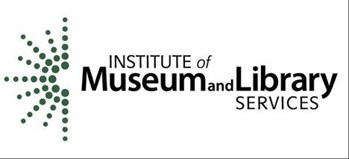What sets this project apart from a standard conservation survey is collaboration with Indigenous originating and descendant communities throughout the process. The main form this collaboration takes is workshops at DMNS.
To date, we have hosted five three-day workshops: two with Haida representatives, two with Tlingit representatives, and one with Kwakwa̱ka̱ʼwakw representatives.
The first workshop took place in August 2021 with representatives from Haida Gwaii. During the summer of 2021, we welcomed Marlo Wylie Brillon (Skidegate Haida and Northern Cree) as our Native American Science Intern. In addition to participating in the grant workflow, Marlo conducted cultural research and outreach to Northwest Coast communities to help us better describe and care for these items. Marlo contributed corrections to our catalog information based on her own cultural knowledge and what she learned from reaching out to other knowledge keepers. Through this outreach, Marlo arranged for two Haida representatives to come to DMNS. An emerging artist, Marlo was also able to share observations on materials and techniques used in carved wooden pieces from her own art practice.
In August 2021, we welcomed a delegation from Haida Gwaii, British Columbia to DMNS. During the three-day consultation, we examined and discussed Haida items, made condition observations, and discussed culturally appropriate stabilization and storage options. Aay Aay Gidins (Skidegate Haida) and Raven LeBlanc (Skidegate Haida) shared cultural information that provides much needed context for DMNS collection items. A weaver and jewelry maker, Aay Aay helped us learn about weaving techniques in examples of basketry and Chilkat weaving. A carver familiar with Haida formline and iconography, Raven helped us observe techniques and representations on wood and argillite pieces. Aay Aay and Raven returned to DMNS in April of 2022 to revisit some of the discussions we started in 2021. James McGuire (Skidegate Haida) was able to accompany them and contribute to the decision-making.
In November 2021, two Tlingit representatives–Gooch Shaayí Harold Jacobs and Naakil.aan Hans Chester–visited DMNS from Southeast Alaska. The three-day consultation included discussing appropriate conservation and collections care for Tlingit items at DMNS. Harold Jacobs, Cultural Resource Specialist for the Central Council of the Tlingit and Haida Indian Tribes of Alaska, has decades of experience working with cultural material, museums, and repatriation efforts. Hans Chester is a Tlingit language and culture teacher, basket weaver, and beader. Harold and Hans shared cultural knowledge regarding the items and made observations on materials, production technology, and style. Both Harold and Hans had visited collections at DMNS before, but this visit was the first focused on materials, techniques, and preservation of Tlingit items. Harold and Hans returned to the Museum in March 2022 to delve deeper into conservation questions about certain items. Hands-on demonstrations of basketry repair techniques-both traditional and conservation-were a highlight of this visit.






























